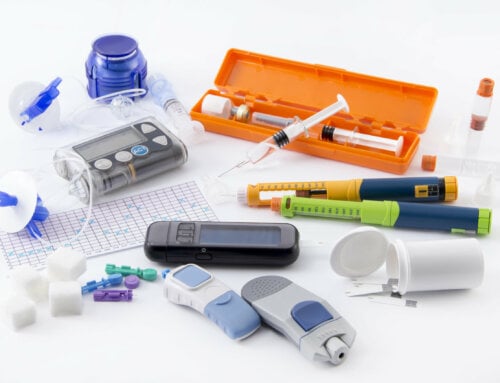Diabetes and its associated costs are now up to approximately $218 billion a year and rising; there are 24 million people with diabetes and another 54 million with pre-diabetes. These numbers are staggering and fortunately, until we find a cure, there are multiple medically oriented companies trying to come up with new technology and product development to help with progressive diabetes treatment.
There is always interest in recent trends and I will try to keep you up to date.
- Echo Therapeutics – The Symphony System. It is a non-needle, non-invasive, wireless trans-dermal continuous glucose monitoring system. Until now, the CGM systems have required a needle or sensor to be placed under the skin and changed anywhere between 3-7 days. You are still required to use finger sticks for calibration of the CGM. The CGM records blood sugar levels throughout the day and night; it helps track trends showing dips and spikes of the blood sugar. The Symphony System uses a biosensor without the need to prick the skin since it is trans-dermal (it is an adhesive patch placed on the skin). FDA approval is expected in 2013 and is showing strong successes in clinical trials. Testing is being done on hospitalized critical care patients who require multiple finger sticks daily. It is well documented that blood sugar control is imperative during acute illness and trends need to be monitored. Studies are also being conducted on out-patients with diabetes. The trans-dermal patch would require changing every 24 hours. The needle-less system technology is a benefit for those who dread needle placement, as well as having the ability to lower the risk of infection especially in the hospital critical care arena.
- Novo Nordisk – Degludec. Although there are basal insulins such as Lantus and Levemir already available, Novo Nordisk is working on Degludec and DegludecPlus as acceptable long acting choices. It is longer acting and improves blood glucose levels with a lower risk of hypoglycemia, especially during the nighttime. It will be easier and more flexible with dosing, possibly 3 times weekly. Degludec will also have a U-200 version, which allows more insulin in a reduced volume for those who require large amounts. DegludecPlus has a fixed dose of mealtime (30% Novolog) and basal (70% Degludec) insulin. Novo-Nordisk is filing for FDA approval for this new insulin in January, 2012.
- DPP4-inhibitors – Januvia, Onglyza, and Tradjenta. These three already FDA approved oral, once daily, medications help the pancreas secrete insulin when the blood sugars are high as in post-prandial (after a meal) so that blood sugar spikes are not so dramatic and also lowers the risk of hypoglycemia. They reduce glucagon production from the liver, decrease gastric emptying as well as increase satiation. They are only approved for type 2 diabetes. They work by allowing GLP1, a gut hormone, to stay in the body longer, which improves control of sugar as well as reducing your appetite. They are available in combination pills with Metformin – called Janumet and Kombiglyze. The side effects are minimal and can include symptoms of a cold, headache, nausea as well as mild skin reactions. These medications are more expensive compared to the older diabetes oral medications.
- Tandem Diabetes Care – T: slim. A new insulin pump, approved by the FDA which should be available by early 2012. It is slimmer, roughly the size of a deck of cards, has a 300 unit reservoir which can connect to any commercial infusion set with luer connections – such as the Comfort, Quick-set, Inset, or Cleo. It has a rechargeable battery, is compatible with Macs or PCs, has a color touch screen, USB connectivity, is easy to use and uses micro-delivery technology which equates to higher accuracy. The negative is that it is not water-proof. The screen should have a protective cover, like an iPhone. It is only approved for people over 12 years old, but studies are being done on children under the age of 12.
More and more products and technology will be available to people with Type 1 and Type 2 diabetes, and ADW will try to keep you updated. Until then, keep reading, keep learning, and keep growing!
NOTE: Consult your doctor first to make sure my recommendations fit your special health needs.






Leave A Comment